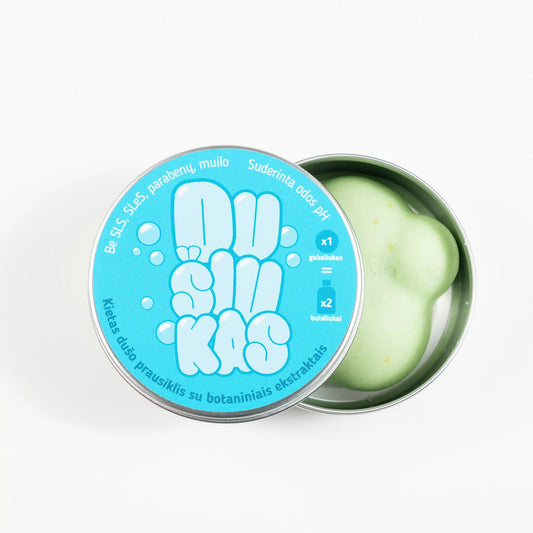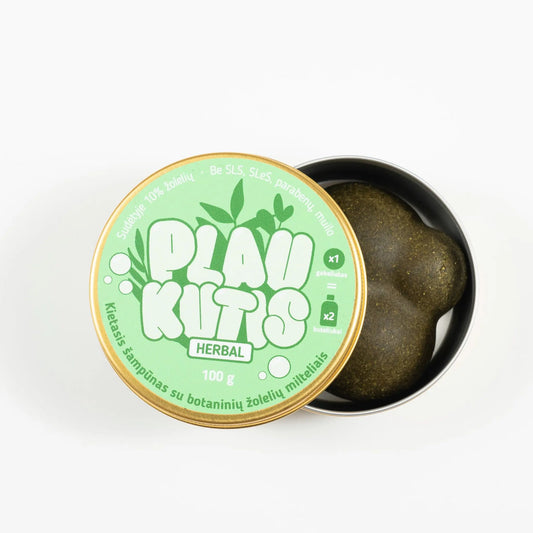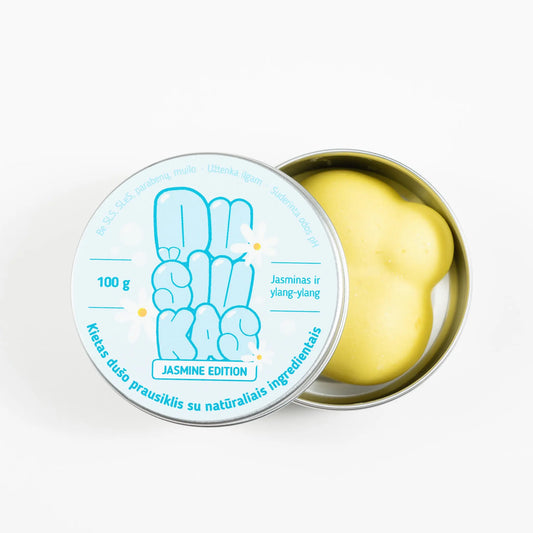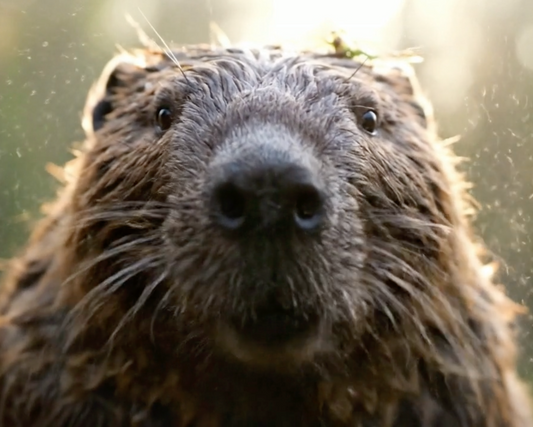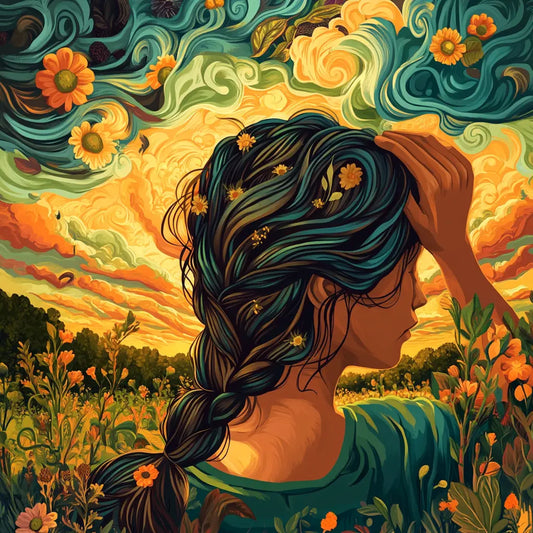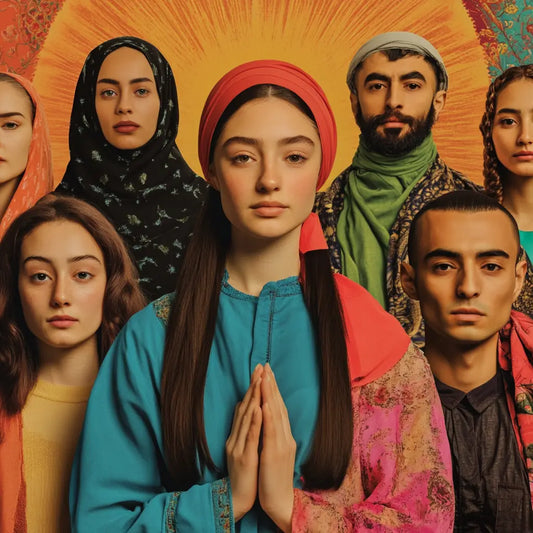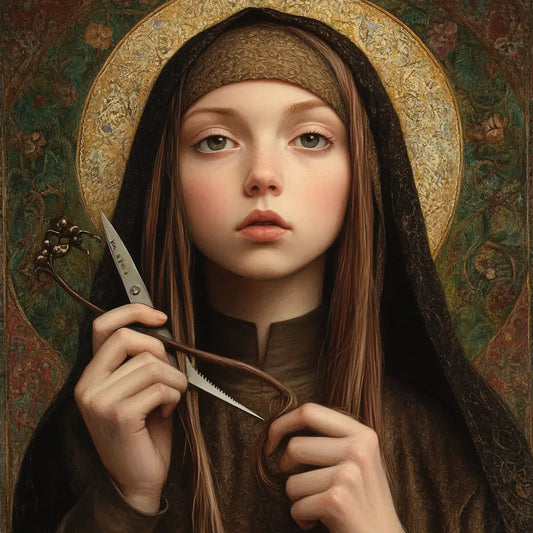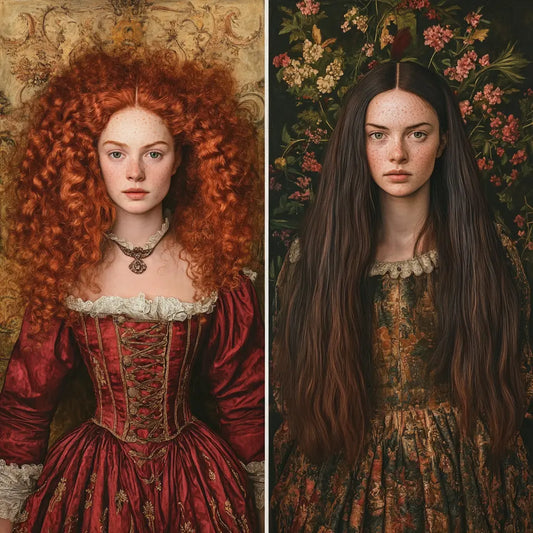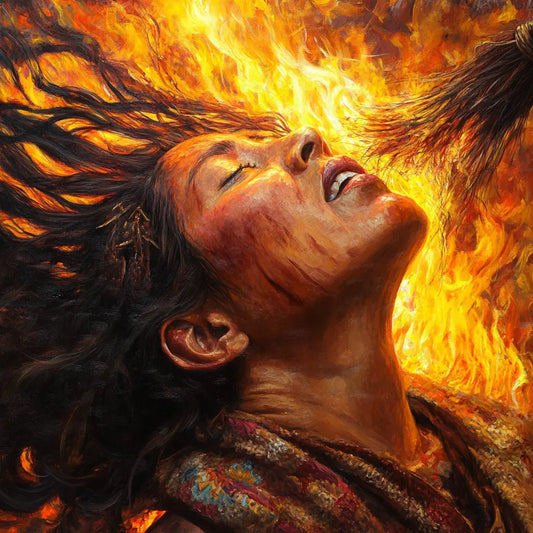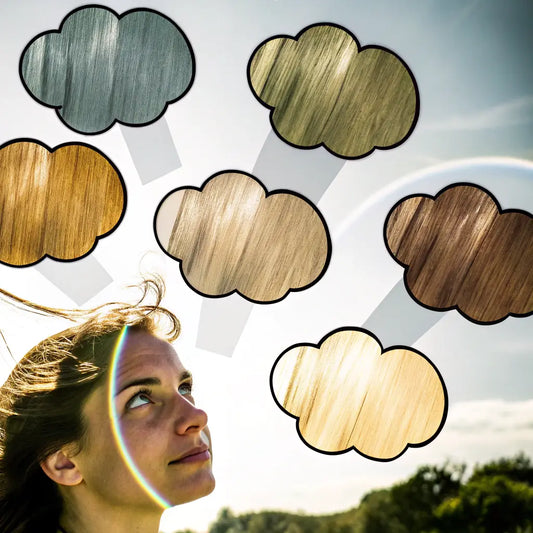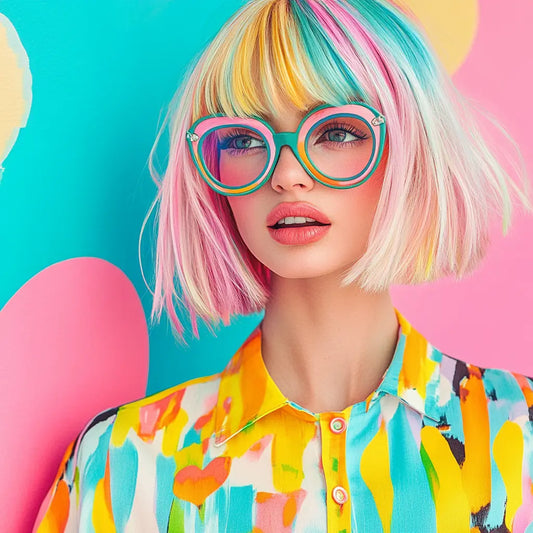Hair is more than just a personal trait—it's a powerful symbol that has influenced art, media, and history throughout the ages. From the ancient world to modern film, hair has been depicted in a variety of ways, shaping how societies perceive beauty, identity, and power. But why does hair occupy such an important place in art?
In this article, we will discuss how hair has been immortalized in sculptures and paintings, its role in media and cultural representation, and how artists throughout history have used hair as a symbol that conveys deeper meaning. For women aged 18 to 54, this article will provide inspiration and show how the hair we maintain every day has historical and artistic significance.

Hair in ancient art and sculptures
In ancient civilizations, hair was not just a personal choice – it was a symbol of status, wealth, and even divine power. Sculptors and painters would depict intricate hairstyle motifs that reflected the ideals of the time. Let’s take a look at how hair was depicted in various ancient cultures.
1. Egypt: Wigs and pigtails – symbols of power
In ancient Egypt, hair was an important symbol of status and wealth. Both men and women wore elaborate wigs, and the nobility used wigs made from human hair or plant fibers. Egyptian artists depicted wigs and braids in their sculptures and tomb paintings as a sign of beauty, power, and wealth.

- Interesting fact: Pharaohs were often depicted wearing wigs or braids decorated with gold beads, which symbolized their divine right to rule.
- Number: A typical Egyptian wig could weigh up to 3 kilograms due to the materials used, including gold thread in the higher grades.
2. Greece: Curls are a symbol of idealized beauty
Greek sculptures, known for their detailed precision, often depicted women with perfectly formed curls. These curls symbolized the ideal of female beauty in ancient Greece, where long hair was a symbol of youth and beauty.

- Interesting: In Greek mythology, goddesses such as Aphrodite were depicted with long, wavy hair, which symbolized fertility and beauty.
- Cultural example: The famous statue of Venus de Milo depicts flowing hair, reflecting the Greek ideal of natural beauty.
3. Rome: Hair as a social indicator
In Roman art, hairstyles were used to distinguish classes and demonstrate power. Roman women, especially aristocratic women, frequently changed their hairstyles to create new fashions. Sculptures from this period reflect elaborate hairstyles that indicated their social status.

- Fact: Wealthy Roman women had hair stylists, called ornatrices , who created elaborate hairstyles, sometimes taking hours.
- Number: Roman hairstyles became so complex that they could take 3-4 hours to create.
4. China: Hair as a symbol of Confucian values
In ancient China, hair had deep cultural and symbolic connotations. Confucian teachings emphasized the importance of wearing long hair as a sign of respect for one's ancestors. In Chinese sculptures and paintings, women were often depicted with long, tied-up hair, which symbolized their social roles.

- Interesting fact: Cutting your hair was considered a serious offense in ancient China, as it was considered a gift you received from your parents.
- Insight: Women wore hair buns ( ji ), which were a symbol of femininity and virtue in Confucian society.
Representation of hair in modern media
Hair continues to be a powerful symbol in media and pop culture today. Film, television, and advertising use hair to express identity, rebellion, and social standing. Let's take a look at some iconic hair moments in media.
1. Hair as Rebellion: Punk and Rock Movements
In the 1960s and 1970s, the punk movement used hair as a form of rebellion against societal norms. Combed, brightly dyed mohawks and shaved heads became iconic symbols as hair gained significance as a counterpoint to traditional beauty norms.

- Number: In the 1980s, the average punk hairstyle could take up to 2 hours to style, using a variety of products like hairspray, dye, and even sugar water to maintain the shape.
- Cultural example: The mohawk of famous British punk rock singer Johnny Rotten has become a global symbol of rebellion.
2. The natural hair movement in film and television
In recent years, the natural hair movement has gained significant media coverage, particularly in films and television shows that portray black women. Now, natural curls, braids, and dreadlocks take pride of place, celebrating the beauty of curly hair and challenging centuries of Eurocentric beauty norms.

- Fact: Movies like Black Panther (2018) helped bring natural hair into the mainstream. The film's hairstyling team used traditional African hair styling techniques.
- Fun fact: A 2019 Nielsen study found that 86% of black women felt empowered by seeing positive representations of natural hair in the media.
3. Hair in Advertising: The Power of the "Hair Flip"
Advertisers have long understood the appeal of hair. Haircare brands capitalize on the public's fascination with long, flowing hair, where models perform the iconic "hair flip" to convey beauty, confidence, and desirability.

- Number: According to market research, ads featuring a hair flip can increase product interest by up to 30% .
- Fact: Pantene's famous slogan "Don't hate me because I'm beautiful" became one of its most memorable advertising campaigns, reinforcing the connection between hair and self-esteem.
4. Hair Symbolism in Film: From Power to Vulnerability
Filmmakers often use hair as a symbol to show a character's journey. A dramatic haircut can signal transformation, while long, flowing hair often signifies freedom or femininity. Haircuts in films like Mulan (1998) or V for Vendetta (2006) symbolize liberation and empowerment.

- Cultural example: In the film V for Vendetta, Natalie Portman's character shaves her head, symbolizing her transformation and liberation from societal expectations.
- Fact: After the release of the movie Mulan , searches for "how to cut your own hair" increased by 40% , showing how much on-screen hair changes are inspiring real-life trends.
Hair as a symbol in artistic movements
Throughout history, artists have used hair as a symbol to convey deeper social issues such as power, rebellion, and personal identity. Let's take a look at how hair became a key symbol in various artistic movements.
1. The Pre-Raphaelite Movement: Hair as a Symbol of Femininity
In the 19th century, the Pre-Raphaelite Brotherhood used long, flowing hair to convey an idealized version of femininity. Their paintings often depicted women with luxurious, untied braids, which symbolized innocence, natural beauty, and purity.

- Insight: Artists like Dante Gabriel Rossetti painted women with flowing red hair, which became a symbol of passion and sensuality.
- Fun fact: Rossetti's muse, Elizabeth Siddal, became famous for her red hair, which inspired beauty standards of the time.
2. Surrealism: Hair as a Gateway to the Subconscious
In the 20th century, surrealists such as Salvador Dalí used hair to explore the subconscious. In Dalí's works, hair often appeared in dreamy, exaggerated forms, symbolizing the unbridled and irrational parts of the human mind.

- Number: Dalí's Omar's Telephone (1936) is one of his most famous works, where the surreal use of body parts, including hair, reflected his interest in the absurdity of the human condition.
- Cultural example: In surrealist photography, hair often takes on a strange, otherworldly quality, as we see in the works of Man Ray.
3. The Art of Feminism: Hair as Rebellion and Empowerment
In the 1960s and 1970s, feminist artists used hair as a tool of rebellion and empowerment. Artists like Judy Chicago challenged traditional images of the female body, including hair, by celebrating its natural form.

- Fact: Judy Chicago's famous work The Dinner Party (1979) celebrated natural hair as a symbol of female empowerment in embroidered imagery.
- Insight: Hair, especially body hair, became a political statement in feminist art, challenging beauty norms that pressured women to conform to unrealistic standards of beauty.
Myth debunking or interesting facts
-
Myth: Hair in art is always associated with beauty.
Fact: In many movements, such as surrealism or feminist art, hair was used to challenge societal norms rather than reflect ideals of beauty. - Fun fact: Venus de Milo's hair is considered one of the most iconic depictions of femininity in art history, but the sculpture is missing arms!
-
Myth: Ancient cultures depicted hair only in its natural state.
Fact: Many ancient cultures used wigs and artificial hair pieces, especially in Egypt, where wigs were used to show status. - Fun fact: Salvador Dalí once created a chair made entirely of hair, symbolizing his surrealist approach to the human body.
-
Myth: Hair sculptures have always been strict and formal.
Fact: During the Baroque period, artists depicted hair with more movement and fluidity, symbolizing drama and intensity.

Practical tips or solutions
- Appreciate the diversity of hair in art: Whether you're visiting a museum or browsing contemporary media, take time to consider how hair is depicted. It often symbolizes more than meets the eye.
- Experiment with artistic hair trends: Borrow inspiration from historical imagery. Try a modern take on an ancient updo or natural, flowing Renaissance-style hair.
- Express your identity through your hair: As artists have done for centuries, use your hair to tell your story. Whether it's bright colors or unique hairstyles, hair can be a statement of personal and cultural identity.
- Understand the symbolism: When you see hair depicted in movies or advertisements, think about the deeper meaning – what does the hair say about the character or the story?
- Challenge beauty norms: Like artists and movements that challenged societal expectations, embrace your hair in all its forms—natural, dyed, long or short.

FAQ (Frequently Asked Questions)
-
Why is hair such a popular art object?
Hair is closely associated with identity, power, and beauty, making it a universal symbol in artistic expression. -
How did ancient cultures use hair in their art?
Hair was used as a symbol of status, beauty, and power. The Egyptians wore wigs, and the Greeks idealized long, flowing hair in their sculptures. -
Can hair be used as a symbol of rebellion in art?
Yes, movements like punk and feminist art used hair to challenge beauty norms and societal expectations. -
How has modern media influenced hair trends?
Movies, TV shows, and advertising have popularized various hair trends, from Rachel's bob cut from Friends to natural hair in films like Black Panther . -
What is the significance of hair in feminist art?
Feminist artists used hair, including body hair, to challenge traditional beauty standards and celebrate female empowerment.

Conclusion
Hair has always been more than just a personal feature – it’s an artistic symbol, a tool of rebellion and a powerful statement of identity. From ancient sculptures to modern media, the depiction of hair reflects deeper social values and cultural shifts. As you explore art, film or even your own personal style, remember that hair, in all its forms, tells a story – a story of beauty, power and personal expression.

